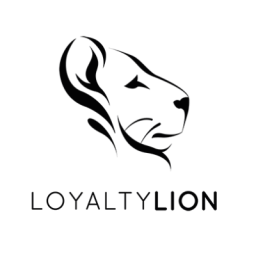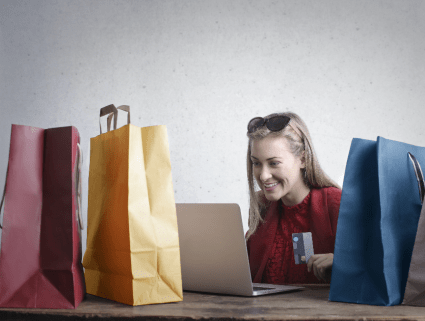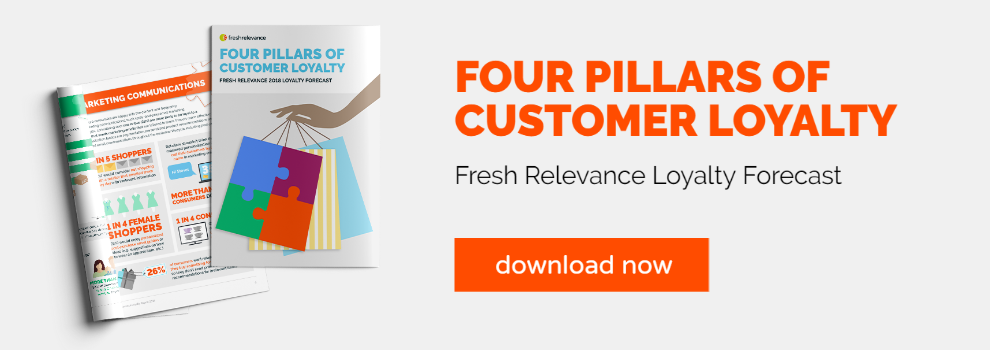While sales from brick-and-mortar stores still hold the majority of the market, eCommerce now accounts for 14.1 percent of total retail sales worldwide. As the eCommerce industry continues to grow, competition increases too, and it becomes harder to retain customers. Today eCommerce stores have to work harder than ever before to encourage their customers to return and repeat purchase.
Enter personalization. McKinsey’s recent research states that personalization increases revenue by 10% to 30%. In order to build a better understanding of your customers, you need to unlock insights about their individual buying behavior and purchasing patterns. You can then provide them a personalized experience that sets your store apart.
Personalization drives customer loyalty. Here we will discuss three ways of making use of customer loyalty personalization.
1. Personalized experiences
Supporting McKinsey’s research, Boston Consulting Group recently found out brands that deliver personalized experience increase their sales twice as quickly as those who do not. So what does a personalized experience really consist of?
A number of marketing activities can lend themselves to a personalized experience when it comes to eCommerce, but let’s start at the beginning of the entire customer journey. Imagine yourself going to a high street store: regardless of how regularly you have shopped there, few staff will know you by name to welcome you. However, with the help of your personalized loyalty program, you can welcome shoppers to your store with an entirely personalized customer experience. Google’s research shows that shoppers form an impression about your brand within 50 milliseconds as they land on your website, so a personalized greeting could have a real impact.
For example, Never Fully Dressed provides a personalized loyalty experience to each customer. When customers land on the page, they are welcomed with their name and they immediately see their own unique points balance. Never Fully Dressed also shows them which loyalty program tier they are in and how far they have to go until they move up to the next tier, taking every opportunity to motivate customers to engage further.
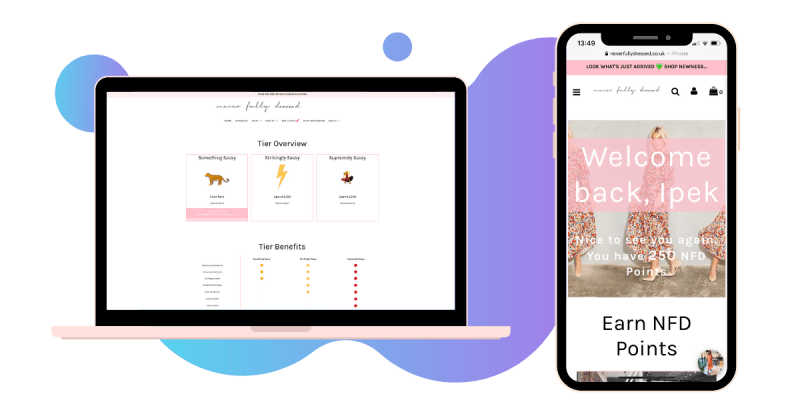
You can also show pop-up notifications and banners that are personalized to the shopper’s individual buying behavior or lifecycle stage. For example, let’s say one of your customers is repeatedly browsing a particular collection, you can then show them a real-time notification stating that they can earn more loyalty rewards if they purchase from that collection.
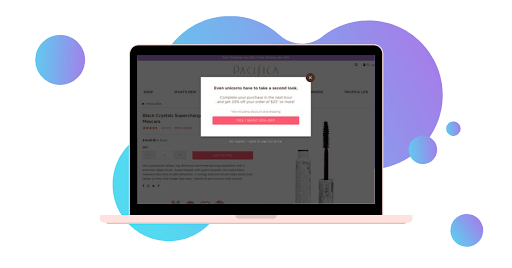
To encourage even greater engagement, you can also show their current points balance and how many points each product is worth to them. In these examples of successful loyalty programs, you can see that Ancient Nutrition continually displays each customer’s personal points balance on their main navigation header to increase repeat purchase rates, and Vitabiotics uses product pages to display how many points customers can earn if they buy a product.

2. Personalized communications
Recent LoyaltyLion research revealed that 78% of customers would return to a brand if they’re individually recognized and rewarded for their loyalty. This means that engaged customers become loyal to the brands that fulfill the customer’s satisfaction by making them feel valued and show that they know them. Therefore, it is crucial to deliver personalized communications to your customers. Today 50% of marketers state that personalized communication is one of the most effective strategies for providing unique experiences.
From customized content to personalized email comms, there are various opportunities to build emotional connections with your customers and improve customer loyalty. The first step to effective personalization is segmenting your audience according to their loyalty status. As you identify your loyal, at-risk, and churned customers through customer behavior, you can then deliver more relevant and customized emails to each segment. Keep in mind that 41% of shoppers stop shopping from a brand that emails them with irrelevant content. Loyalty emails have the ability to perform 14 times better than regular marketing emails, because they can be so highly personalized to individual customers.
Your already loyal customers are proven to have a higher lifetime value than your guest shoppers, and they are also the most likely to be engaged than new customers. By default, this means they are the most likely to interact with your marketing campaigns. To encourage your customers to spend more, you can offer shoppers their own special double points promotions, and include personalized product recommendations in your emails like MD Complete.
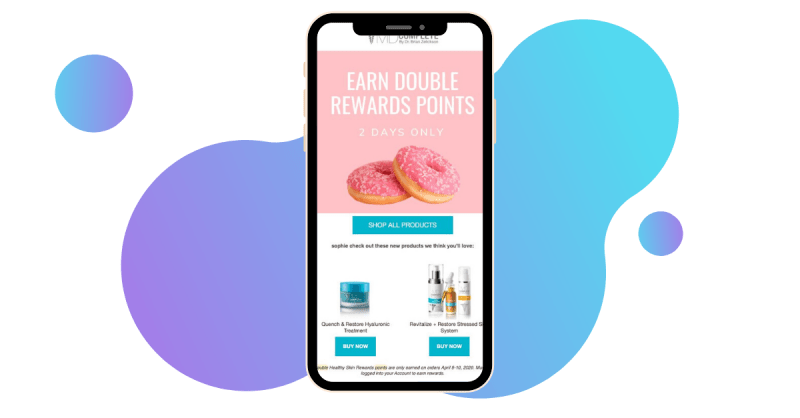
To motivate your at-risk customers to return to the site, you could run a “surprise and delight” campaign that makes them feel valued. You could also send them personalized points balance reminders that also explain the different ways they could earn more points in your rewards program. To surprise and delight them, you could also offer them bonus points or a free gift on their birthdays. These one-to-one emails to each individual customer prompts them to return and engage more with your store again and again.
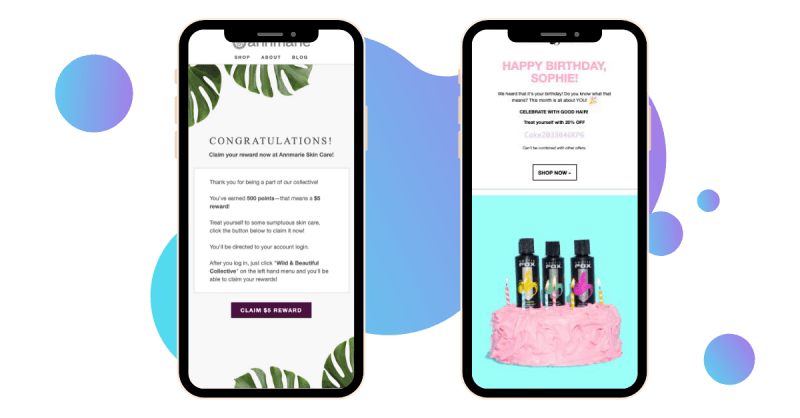
3. Personalized offers and product recommendations
65% of customers are motivated to be loyal after receiving personalized offers. Analyze your shoppers’ loyalty data to understand their purchasing behavior. Then make sure you’re meeting customers’ expectations by using this information to send them personalized offers.
For instance, if you know what products each shopper is interested in, you can offer early access to similar product launches or invitations to exclusive events based on those products to your loyal customers. This will show them that you individually recognize them and appreciate their loyalty. As a result, they will have more reasons to come back.
By keeping an eye on your customers’ purchase and engagement patterns, you can also provide personalized product recommendations. Personalized product recommendations incentivize 61% of customers to be loyal. To improve customer loyalty still further and secure the next purchase sooner, you can send personalized offers or points earning opportunities related to these product recommendations.
A final word on improving customer loyalty through personalization strategies
Today’s customers want their loyalty to be rewarded with individual recognition, and real value. Leverage your loyalty data to refine and personalize your marketing wherever possible. When customers land on your site, welcome them with their name and points balance. Show that you understand their shopping preferences by offering them the opportunity to earn points through personalized recommendations and offers. And use loyalty data to make each email you send entirely unique. Through these kinds of personalized interactions, you can foster loyalty and lifetime value, positively impacting your store’s revenue and long-term growth.
About LoyaltyLion
LoyaltyLion is a data-driven loyalty and engagement platform that powers ecommerce growth. Unlock real insights to build a better understanding of what drives longer-lasting customer relationships, and use those insights to connect and accelerate your existing marketing efforts. Proven to increase retention and spend, LoyaltyLion is trusted by thousands of fast-growth ecommerce merchants worldwide.

